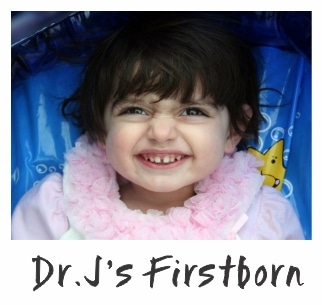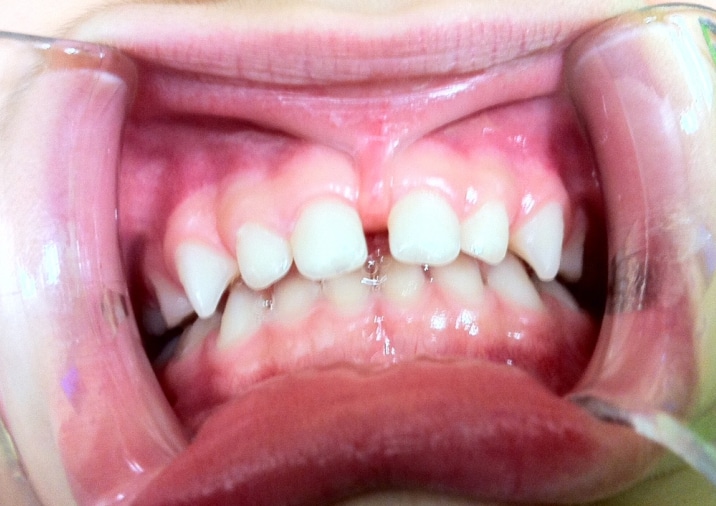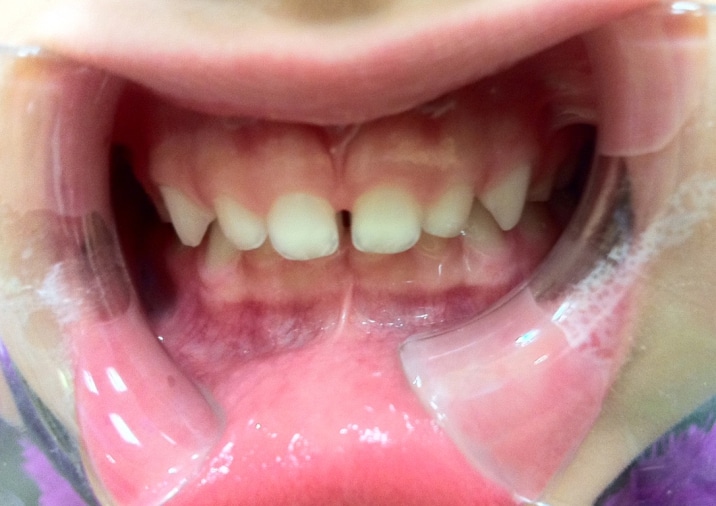Dr. J. AND MRS. SHAHANGIAN ARE PASSIONATE ABOUT THE BENEFITS OF BREASTFEEDING AND UNDERSTAND HOW IMPORTANT IT IS TO START PREVENTIVE ORAL HEALTH CARE AS SOON AS POSSIBLE.
They also prescribe to the American Association of Pediatric’s recommendation to support breastfeeding for at least the first 6 months and continuation of breastfeeding for 1 year or longer as mutually desired by mother and infant.
In 2008, as first time parents, the Shahangians were overwhelmed with the mental frustration and physical pain caused when their newborn’s tongue and lip tie went undiagnosed.
DR J HAS SINCE RECEIVED EXTENSIVE TRAINING AND EXPERIENCE USING THE LATEST TECHNOLOGIES AND TECHNIQUES TO HELP MOTHERS DEALING WITH A SIMILAR SITUATION.



He is also the first board certified pediatric dentist to champion the cause of breastfeeding through formal studies as a Certified Lactation Educator Counselor. Dr J also has extensive training and experience in guiding new parents to help minimize the risk of Severe Early Childhood Caries (S-ECC) often caused by frequent breast or bottle feeding habit.
SCRIPPS PEDIATRIC DENTISTRY IS SOUTHERN CALIFORNIA’S FIRST CLINIC TO IMPLEMENT BABY ORAL HEALTH PROGRAM (BOHP), A MOM AND TODDLER PREVENTIVE ORAL HEALTH PROGRAM DEVELOPED BY THE AUTHORITATIVE UNIVERSITY OF NORTH CAROLINA DEPARTMENT OF PEDIATRIC DENTISTRY.
WHAT IS A Frenum and why a FRENECTOMY?
A frenulum (or frenum, plural: frenula or frena) is a small fold of tissue that secures or restricts the motion of a mobile organ in the body. Best know frenums are the one under the tongue (lingual) and the one under the upper lip (labial). In approximately 5% of the population, one or both of these frenula has a congenital anatomical variation where its mispositioned, too tight, or too thick, leading to tethering of the tongue or lip. The restrictive frenum of the upper lip is colloquially called lip tie, and the tongue is called tongue tie (aka ankyloglossia).
A frenectomy is a procedure used to correct lip or tongue tie. Its often diagnosed by lactation consultants when causing restrictions in movement that can cause significant difficulty with breastfeeding. In other instances, other healthcare providers like speech pathologists, pediatricians, dentists or orthodontists may diagnose the issue when addressing problems like speech difficulties, craniofacial development issues, or dental decay.
WHY LASER FRENECTOMY?
A frenectomy can be done using multiple technologies and techniques. We have been using laser technology since 2011 as the primary method as it has yielded the easiest procedure for the child with the best results compared to other techniques. The laser does not cut the tissue, rather, the light energy vaporizes it. This technology allows nearly zero infection, bleeding, or pain post surgery as it creates a ‘sterile bandage’ by cauterizing the capillaries and desensitizing the area’s innervation.
HOW TO PREPARE FOR THE PROCEDURE
There is not much that has to happen ahead of time. With newborn frenectomy procedures, we require that the child is under the active care of a certified lactation consultant before and continues after. Remember, the procedure merely helps correct the physical restriction, and proper support in breastfeeding technique from a lactation consultant will allow best results. If you don't have a good lactation consultant, we can help you find one.
On the day of, the best way to prepare for the procedure is to have the medications that you may need on hand so you can focus on your child following the procedure. We dont require the use of any medication, though some parents have reported smoother recovery when onboard. Your options are:
Tylenol - For newborns, use the manufacturer’s recommended dosing, every 6-8 hours after the procedure.
Ibuprofen- For children 6 months of age or older, you may use ibuprofen instead (or with Tylenol). Please follow the dosing instructions on the package.
Other- Alternatively you may use whatever works for your family. This includes homeopathic remedies like arnica or Rescue Remedy, or nothing at all.
Because topical numbing cream is used during the procedure, and since the laser itself has some analgesic properties that remain, not every child needs medication before and after. Its really your preference.
WHAT TO EXPECT THE DAY OF
In general, the procedure is very well-tolerated by children. We take every measure to ensure that pain and stress during the procedure is minimized.
- Topical and or local anesthesia is all that is needed. (General anesthesia is typically not used).
- Due to laser safety regulations, parents are not permitted in the treatment room during the few short minutes of the procedure.
- For babies under the age of 12 months, a topical numbing cream is applied to the tissue(s) that will be removed.
- For children 12 months of age or older, numbing cream is applied and often followed by local anesthetic.
- Crying and fussing are common during and after the procedure for children under the age of 24 months.
- In older children, pending the child’s temperament, we have the option of using a very light sedative (Versed) to safely help relax the anxious child and provide an amnesic property in case you are worried about them remembering being separated from you. This oral sedation will require basic NPO instructions and earlier check in for the meds to be administered. Your pre and post sedation instructions will clearly be spelled out for you if this option is offered.
- You may join your child immediately after the laser is turned off and breastfeed, bottle-feed, or soothe your baby as your preference.
WHAT TO EXPECT AFTER A FRENECTOMY
With our laser technology and technique, we routinely see beautiful tissue healing and restoration of normal tongue or lip range of motion potential. There are two big factors beyond the surgical procedure that determine a child’s outcome:
1- Proper wound care
2- Proper lactation counseling
PROPER WOUND CARE AFTER PROCEDURE
The main risk of a frenectomy is that the mouth heals so quickly that it may prematurely reattach at either the site of the release. In fact, we are at times asked to retreat a tongue or lip tie that was previously treated by another provider, where the full range of motion has not been obtained or symptoms have returned. The best way to minimize such a situation is by proper wound care after the procedure. These are exercises that can help stretch the tissues once release and more importantly prevent reattachment of the open wound while healing takes place.
The exercises demonstrated below are best done with the baby placed in another person’s lap (we call this knee to knee) with the feet going away from you and you approach them from their 12 o’clock position.
Stretches
A small amount of spotting or bleeding is common after the procedure, especially in the first few days. Expect that your child will cry during the exercises and it is not a sign of you doing anything wrong. Its a normal response to poking around in a child’s mouth, specially when a sore exists (and if not done right, the procedure may not achieve its intended benefit). Wash your hands before and perform the stretches once the day of the procedure and then every 4 hours for four weeks (can skip the night time stretch not to wake up the child). In the younger child, diaper changes are a good time to do the exercises to help you with establishing a routine.
The Upper Lip
Part 1- Simply place your finger under the lip and move it up as high as it will go (until it bumps into resistance). Then gently sweep from side to side for 1-2 seconds. Remember, the main goal of this procedure is to insert your finger between the raw, opposing surfaces of the lip and the gum so they can't stick together.
Part 2- Hold the upper lip and stretch it up and outwards 1-2 seconds to hlep mold the lip into a more natural length/tone.
The Tongue
Insert both index fingers into the mouth. Then use both index fingers to dive under the tongue and pick it up, towards the roof of baby's mouth. The tongue needs three separate stretching motions:
Part 1- Basic idea is to get under the tongue, then pick the tongue up as high as it will go (towards the roof of the baby's mouth). Hold it there for 1-2 seconds and then relax. The goal is to completely unfold the diamond so that it's almost flat in orientation (remember, the fold of the diamond across the middle is the first place it will reattach). The key to the success of this stretch is that your fingers are placed deep enough, with fingertips touching in contact prior to lifting the tongue up. Then push towards the diamond and then make sure the tongue goes up and not backwards. If your fingers separate and go on either side of the diamond, your lifting pressure will be directed at the sides of the tongue and not at the diamond itself.
Part 2- With one finger propping up the tongue, place your other finger in the middle of the diamond and turn your finger sideways and use a lifting motion from front to back to try and keep the diamond as deep as possible. Use a lifting motion when you sweep through the diamond, trying to separate the horizontal fold across that diamond. Make sure your finger starts within the diamond when doing this stretch.
Part 3- Massage on either side of the diamond (outside the diamond) to loosen up the musculature of the remainder of the floor of mouth. You can use more pressure when doing these stretches because you aren't in the wound at this point.
PROPER LACTATION COUNSELING
The tongue and or lip tie release procedure is simply a corrective surgery to correct the anatomical defect which was tethering the tongue to lip. The act of latching and sucking require good technique and a newborn mother dad often need expert assistance in learning this process to achieve a deep latch. To have the tongue/lip tie release procedure completed in our clinic, we require that you are under the care of a lactation consultant before and continue after. If you dont have a good lactation consultant, we will provide a local referral for you.
